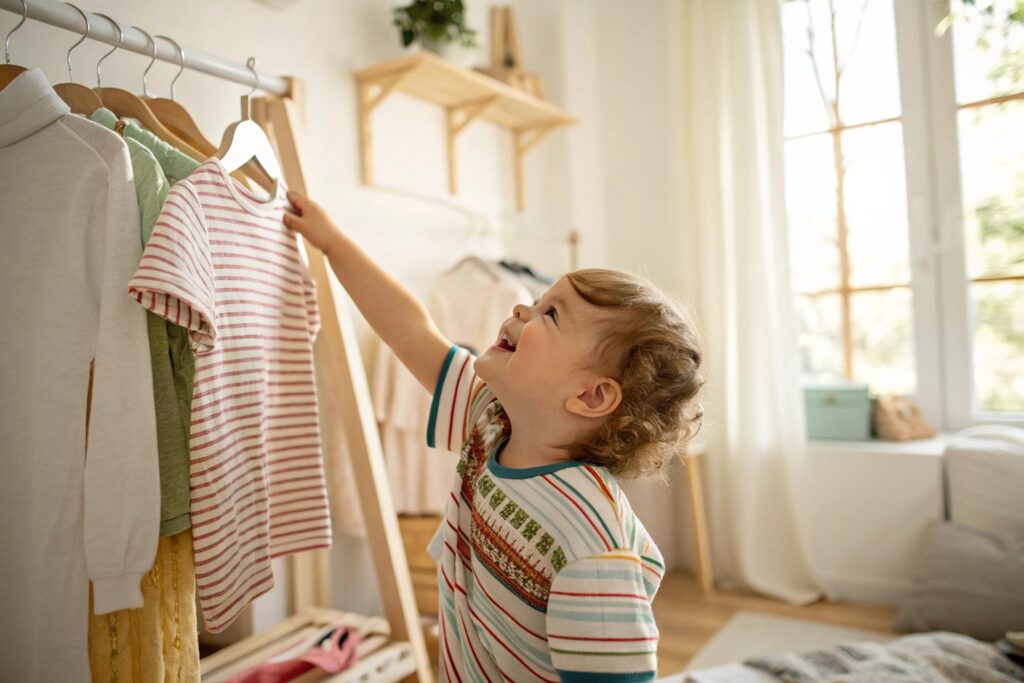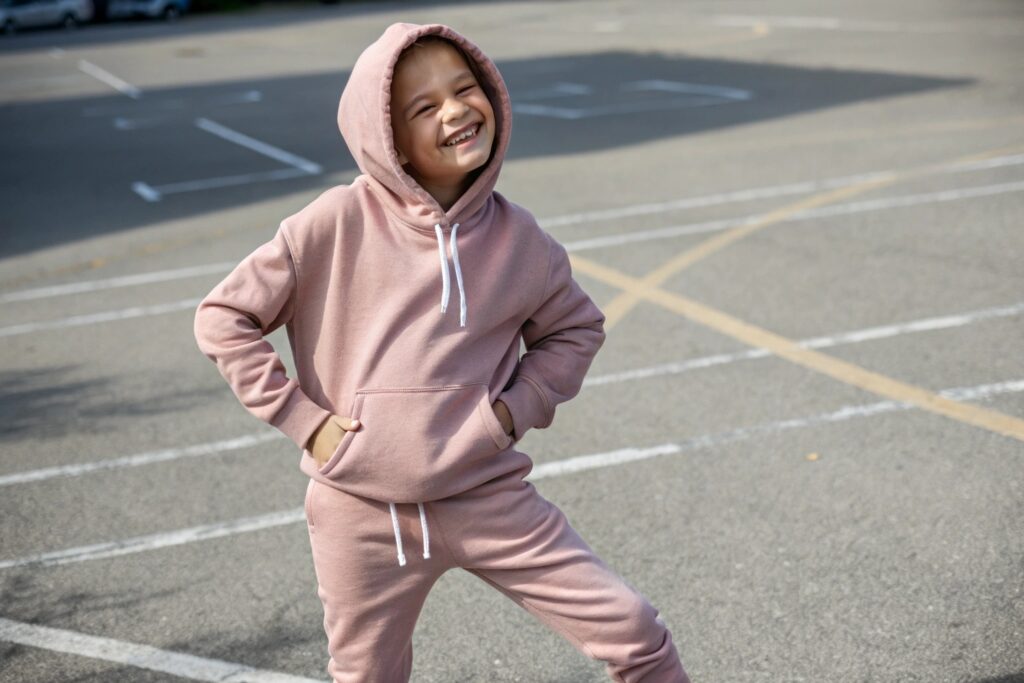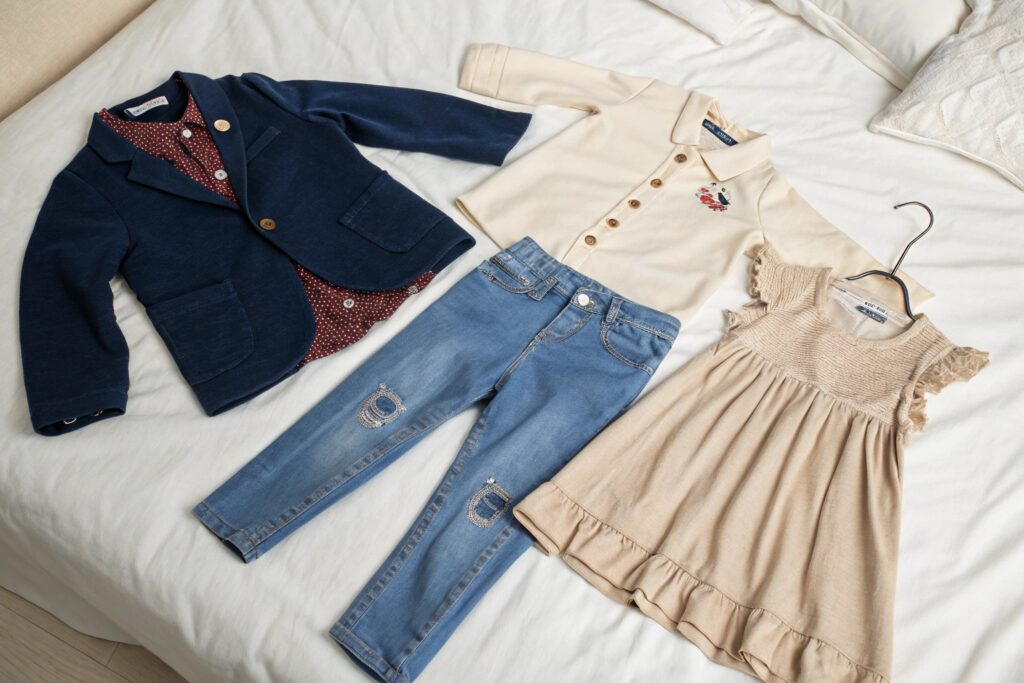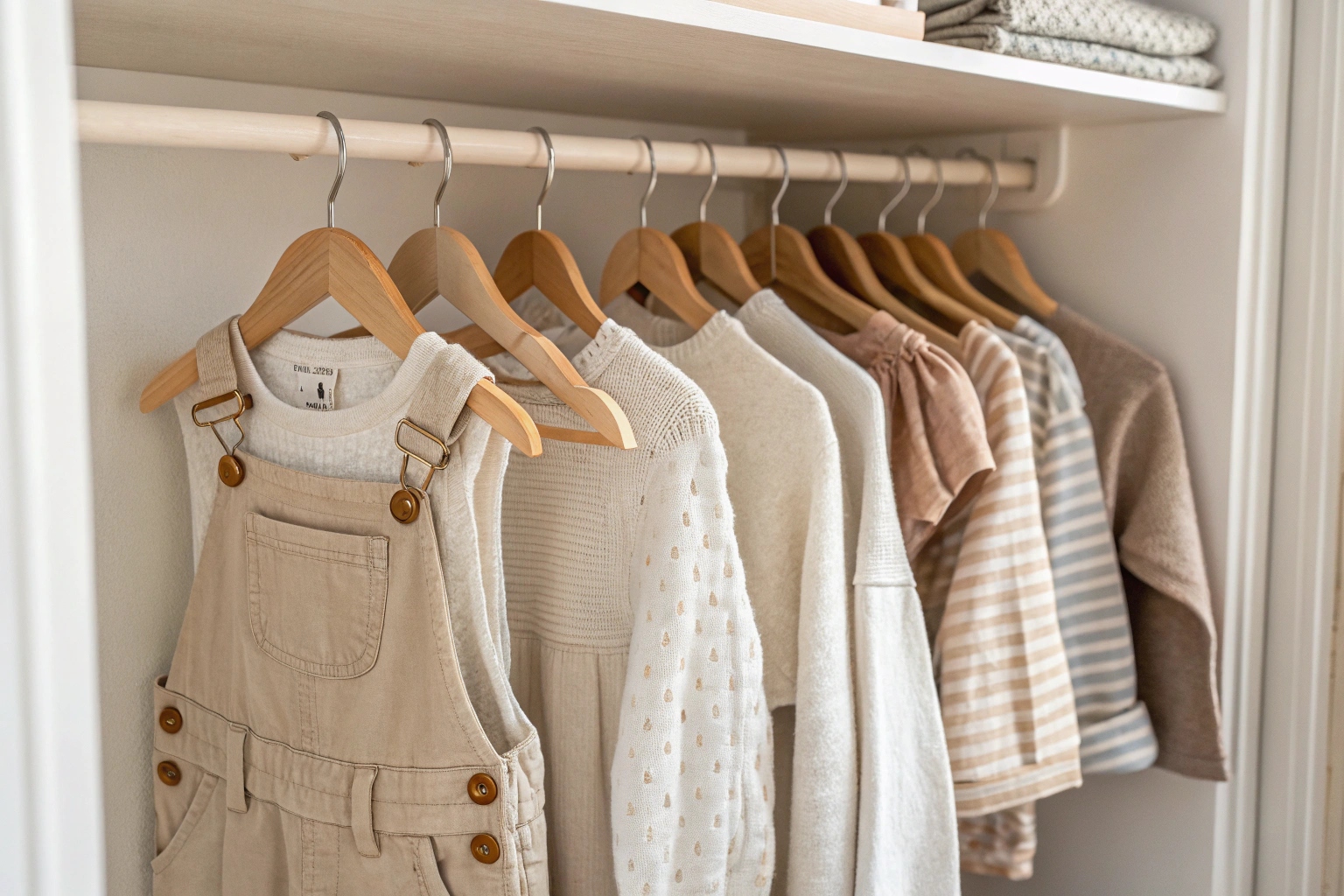A closet full of kids' clothes might feel like a win, but the reality? Most of it goes unworn. It's not just wasteful—it’s overwhelming.
The fewer the clothes, the sharper the style. Kids thrive with simplicity, and so do brands that understand it.
As someone running a garment factory in China, I work closely with wholesale buyers who’ve realized that fewer, higher-quality pieces aren't just practical—they’re also far more profitable and stylish. Let's explore why "less" is redefining kidswear success.
Why less is more in fashion?
How many times have you seen a child grab the same shirt every day, ignoring the rest?
Because when it comes to fashion, too many choices dilute identity. Less is more—especially for kids learning to express themselves.

Why do kidswear collections with fewer options perform better in retail environments?
Retailers often assume more styles mean more chances to sell. But real-world data shows otherwise. Kids and parents gravitate to the most comfortable, versatile items. A 15-piece line with solid core basics and two or three accent items will outsell a bloated 50-piece line packed with weak fillers.
In my own factory, I’ve helped clients reduce their SKU count by half—and watch their turnover rate increase. Why? Because they eliminate decision fatigue, reduce overproduction, and focus marketing efforts on a few winning items.
Here’s how “less” creates value:
| Strategy | Result |
|---|---|
| Reduce SKUs to essentials | Faster inventory movement |
| Focus on mix-and-match | Higher perceived versatility |
| Eliminate trendy extras | Stronger identity, fewer markdowns |
When brands trust simplicity, their customers do too.
Why is simplicity more appealing to modern parents buying kidswear?
Parents are busier than ever. They want fast choices that still feel intentional. Capsule wardrobes deliver that—a small number of quality pieces that all work together. It’s not about fashion overload anymore. It’s about clean, effortless, repeatable style.
Most of my U.S. and European clients tell me the same thing: their customers want fewer choices that offer more consistency. With only 5–10 key styles in rotation, kids get dressed faster, parents do less laundry, and everyone wins.
How does clothing affect children?
To a child, clothing is more than fabric. It’s comfort, identity, and freedom of movement all wrapped into one.
What kids wear affects their mood, confidence, and ability to learn, play, and grow.

How can uncomfortable clothing limit a child’s emotional and physical experience?
Tight collars, itchy seams, or stiff pants? They seem minor to adults, but for kids, these irritations can derail their whole day. When kids are uncomfortable, they’re less focused, more agitated, and less likely to engage in play or learning.
I’ve spoken with brand owners who didn’t believe this—until complaints about itchy tags and inflexible materials started flooding in. Now they ask us at Fumao Clothing to test everything: from flexibility to breathability to seam softness.
These aren’t fashion specs. They’re functional specs—and in kidswear, they matter even more than style trends.
How does self-expression through clothing shape children's development?
Around age 3, most children begin to show strong preferences for certain clothes. That’s a sign of developing self-awareness. And when their favorite outfits are simple, soft, and easy to wear, they begin to feel ownership of their choices.
By giving children a limited set of high-quality options, we help them build style confidence. They're not just putting on clothes—they're building identity.
That’s why more of our clients are asking for customizable labels or prints: not to follow trends, but to help kids feel seen and special in their favorite gear.
Why owning less clothes is better?
Overflowing drawers might look good on Instagram, but in real life? They create stress, not style.
Fewer clothes mean more thoughtful combinations, better usage rates, and less waste.

Why does a minimalist kidswear wardrobe improve both daily life and brand identity?
When kids have fewer items, everything gets worn more often. That means brands get better visibility for each piece, and parents see more return on investment.
In one of our case studies, a brand cut their seasonal line by 40% and re-invested in organic cotton basics. Not only did sales grow by 22%, but returns fell and customer loyalty rose. Why? Fewer options, better quality, and more clarity for buyers.
And it’s not just theory—here’s what we see:
| Factor | Outcome |
|---|---|
| Fewer clothing pieces | Less laundry, faster morning routines |
| Better quality per item | Longer lifespan, happier children |
| Consistent brand message | Easier marketing, stronger identity |
This is why we at Fumao push clients toward capsule lines—not to reduce creativity, but to focus it.
How does owning fewer clothes help with sustainability and smarter sourcing?
Too much clothing leads to textile waste, extra packaging, and high logistics costs. Especially in kidswear, where fast growth means frequent replacement, less is more sustainable.
Our DDP shipping service reduces unnecessary middle steps. It’s one of the reasons buyers who adopt lean sourcing strategies see better long-term margins. When every piece in a box is useful, there's less shrinkage, and fewer “dead” styles.
Parents are also becoming more eco-aware. Brands that build with that mindset—and show it in how they produce—win their loyalty.
Why is it important for children to wear clothes?
Clothing might feel like a given, but its role in a child’s growth isn’t just about warmth or modesty.
Children’s clothing provides physical protection, social cues, and emotional grounding. It sets routines, builds confidence, and shapes learning.

Why is appropriate clothing essential for helping kids engage in their environments?
From daycare to school to outdoor play, clothing either supports a child—or gets in the way. A bulky jacket might look cool, but if it limits movement, it’s a burden. Shorts without pockets might be trendy, but if a child can’t carry anything, it’s frustrating.
That’s why I encourage every brand buyer I work with to consider the activity environment. Whether it’s playground-ready joggers or easy-snap tops for preschoolers, function should drive design.
At Fumao Clothing, we use performance testing to mimic child activities—jumping, crawling, washing, stretching. We want every piece we make to fit into a child’s real life.
Why do clothes help create structure and emotional security for kids?
Daily routines build security. And getting dressed is usually the first routine of a child’s day. When they know what they’ll wear, and it fits well, they feel more grounded. That comfort shows up in school performance, social behavior, and family harmony.
The best part? It doesn’t take a giant wardrobe to achieve that. It takes a few well-fitting, familiar items they love.
For brands, this means offering comfort-forward clothing that kids want to reach for again and again. Fewer pieces. Better value. Stronger bond between child and garment.
Conclusion
Less isn’t about sacrificing—it’s about choosing wisely. In kidswear, fewer high-quality, functional, and stylish items give children space to grow—and brands room to thrive.










